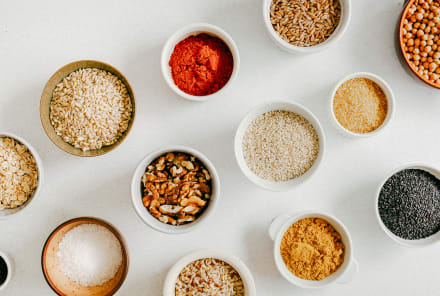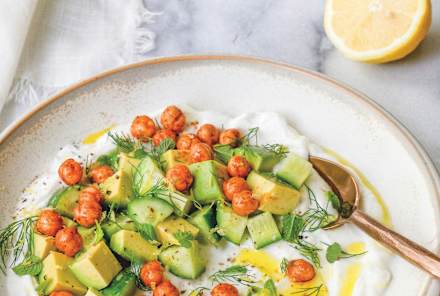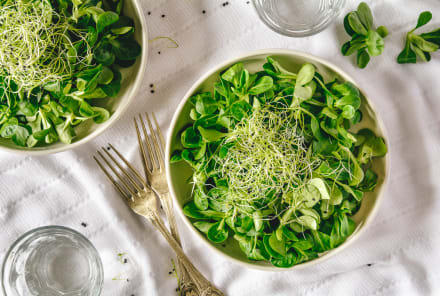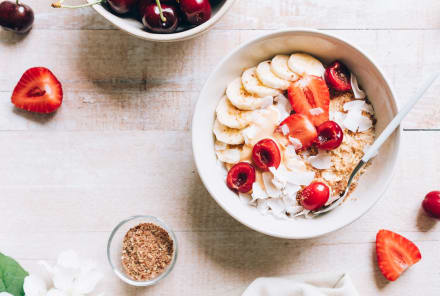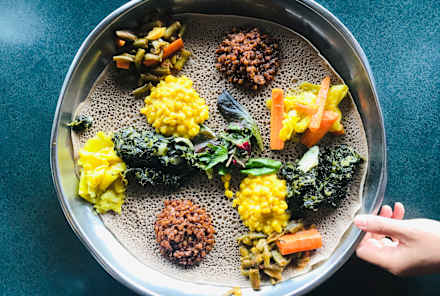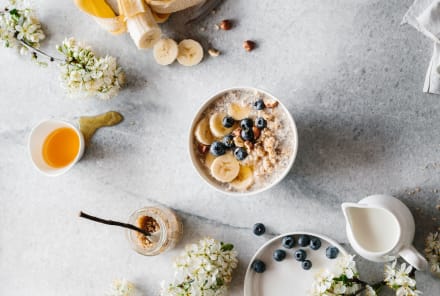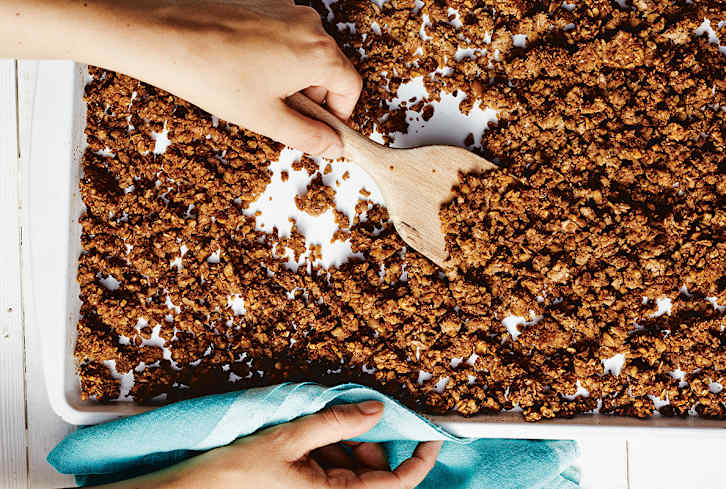Advertisement
The Simple Way To Make Roasted Veggies Way Healthier

Roasted vegetables are one of the great blessings of fall and winter—suddenly, you have access to an entire range of crispy-on-the-outside, fluffy-on-the-inside veggies. Roasting offers the benefit of the Maillard reaction, a process that caramelizes the innate sugars in food, which turns the brown and adds the sweet, toasty note that your taste buds love (it also offers the benefit of warming your apartment, which is extra useful if you have an old, persnickety Brooklyn brownstone...or is that just me?). To get the best results with roasted vegetables, you want to toss them generously in some type of fat and a generous amount of fine-grain sea salt—but which types of fat are best for roasting, and which pair best with veggies? Never fear, fall produce fiend. Here's your ultimate oven-friendly guide.
Avocado oil
When you're roasting veggies, you always want to look for a high-heat oil, which means that the smoke point of said oil—or the time when it starts to smoke, thus burning and turning many of the fats rancid, a process that affects both the flavor and health benefits—is above a typical roasting temperature. At 520 degrees Fahrenheit, avocado oil's smoke point far exceeds the 450- or 425-degree temps most recipes require. Avocado oil is the most neutral of roasting oils, which means it pairs well with almost anything. It's also liquid at room temperature, and can thus be easily drizzled on a veggie mixture right on the pan—a huge boon when roasting. Swap it in for any recipe that calls for vegetable or canola oil. It's also a good opportunity to be generous with salt and spices since the avocado oil itself isn't imparting much flavor. Use it to highlight a bold harissa blend (which goes great with sweet potato or butternut squash), or a more out-there Berber or Adobo mixture.
Coconut oil
Coconut oil has a smoke point of 450 degrees Fahrenheit, which is usually the absolute max roasting temperature a recipe will require. While the verdict is still out on supplementing coconut oil for a healthier diet, doctors agree that cooking with it is generally healthy. It offers a mildly sweet flavor that pairs especially well with Thai or Indian recipes or spice combinations (it loves, for instance, a good turmeric or lemongrass blend). The only problem? Because it's a saturated fat, coconut oil is solid below 78 degrees, which can make it tricky to toss with veggies. There's an easy solution, though. Simply lay your veggies out on a parchment-lined pan, then place a chunk of coconut oil on top in the middle. Place the pan in the oven for four to five minutes, until the coconut oil has melted completely, then remove and toss the veggies until the oil coats them evenly. Return to the oven and finish roasting until done!
Ghee
An ayurvedic staple, ghee has a smoke point of 482 degrees Fahrenheit. Ghee is made by clarifying butter, which removes its proteins but leaves all of its nutrients. It tastes like an earthier, more pungent, toastier butter and can be used in any recipe that could use a dose of heady butter-type flavor. It naturally pairs really well with Indian cuisines, but it's also great with herb-forward blends—ghee-tossed parsnips with herbes de Provence is a knockout combo. It loves onions and shallots as well—try tossing turnips or radishes in ghee and roasting with any type of shallot or onion to be absolutely wowed.
Olive oil
While olive oil's smoke point is a little bit lower than the three above oils—between 375 and 405 degrees Fahrenheit—it has a high resistance to oxidative damage, which means that the fats in it don't turn rancid even at high temperatures. It's been shown in studies to actually hold up better1 during frying than vegetable oil, which makes sense, given that in Italy and Greece, they've been cooking all of their food in olive oil for centuries. Keep your roasting temperatures to 400 degrees Fahrenheit and below with olive oil and you'll be good to go. High-quality olive oil tends to have a grassy, vegetal flavor that pairs well with any types of herbs—it loves rosemary, thyme, and oregano. While it's not as neutral as avocado, you can use that strong flavor to make your veggies really shine—drizzle it liberally on sweet potatoes, Brussels sprouts, parsnips, turnips, carrots, and gourds of all sorts, and add an herb or two, some salt, and maybe an allium (smashed garlic, a chopped shallot), then pop the pan in the oven, letting the simple flavors really shine.

Why Nutrition Is Key To Changing Your Relationship With Alcohol
Brooke Scheller, DCN, CNS

Why Alcohol Sabotages Your Gut Health & How To Get Back On Track
Brooke Scheller, DCN, CNS

Why Nutrition Is Key To Changing Your Relationship With Alcohol
Brooke Scheller, DCN, CNS

Why Alcohol Sabotages Your Gut Health & How To Get Back On Track
Brooke Scheller, DCN, CNS

Why Nutrition Is Key To Changing Your Relationship With Alcohol
Brooke Scheller, DCN, CNS

Why Alcohol Sabotages Your Gut Health & How To Get Back On Track
Brooke Scheller, DCN, CNS

Why Nutrition Is Key To Changing Your Relationship With Alcohol
Brooke Scheller, DCN, CNS

Why Alcohol Sabotages Your Gut Health & How To Get Back On Track
Brooke Scheller, DCN, CNS
